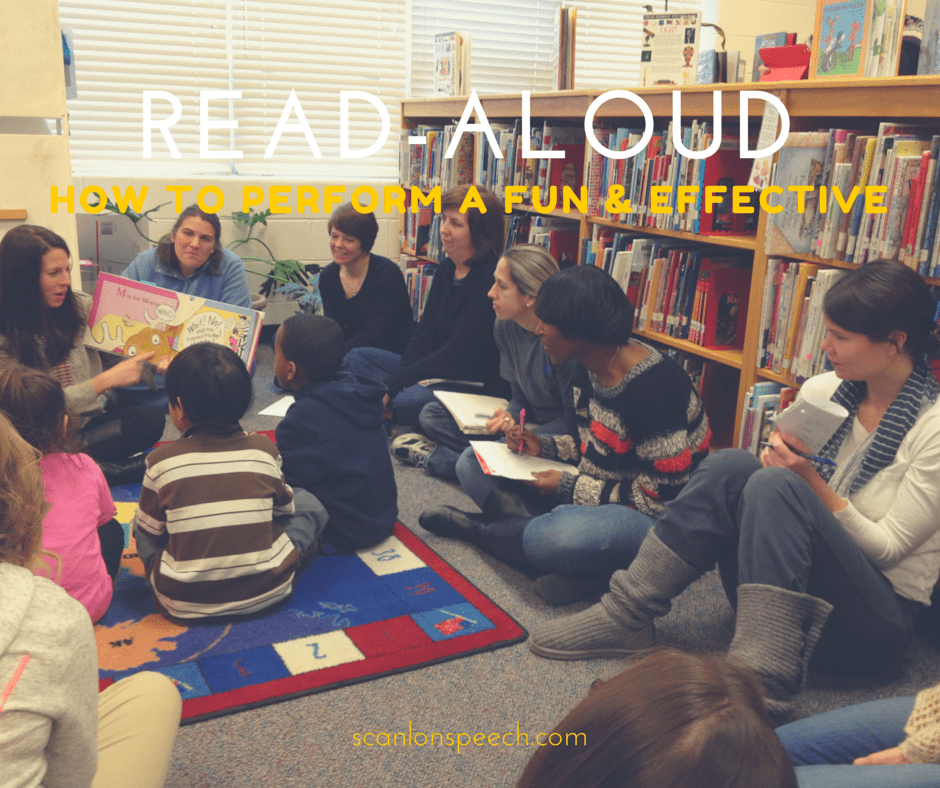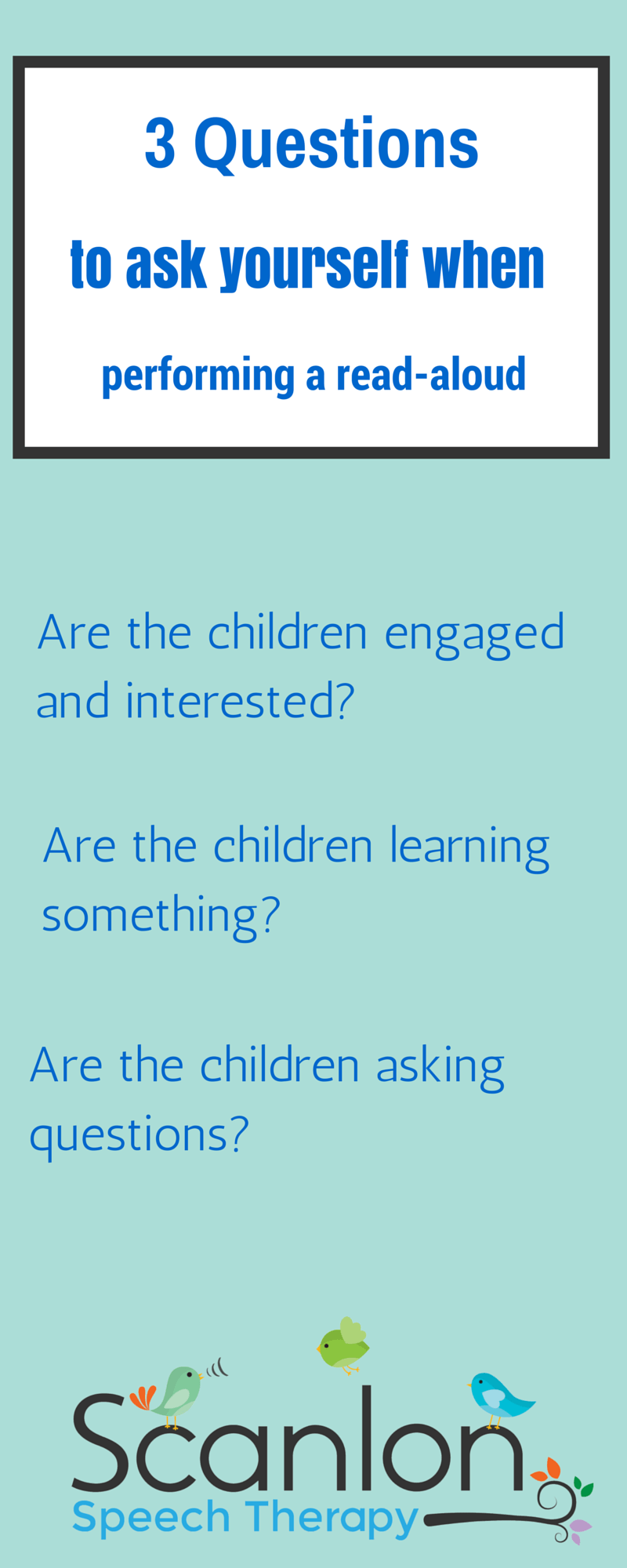Sign Up For Our E-Blast To Receive Information on our Books, Speech Therapy materials and our latest freebies!
How to Perform a Fun & Effective Read-Aloud: 3 Questions to Ask
As a speech language pathologist who has been practicing for almost a decade I’ve read to many children.
If you’re a preschool, kindergarten, or early elementary teacher, you probably perform read-alouds on a daily basis.
If you’re a speech language pathologist, you may perform a read-aloud when you provide infused or push-in speech therapy.
If you’re a parent or a homeschooler, you may also regularly perform read-alouds with your children.
Photo Credit: Barrett.Discovery
Here’s my question – How do you KNOW you are giving a fun and effective read-aloud?
In this video, I explain how to determine if your read-aloud is fun and effective.
Please click the video to learn more.
Below are the summarized notes of the video.
A fun and effective read-aloud should bring the book to life.
A fun and effective read-aloud is interactive, meaningful, and sometimes even hands on.
The end result is always the same – we want our children to be engaged and we want them to learn something.
In order to do this, we have to be good at thinking on our feet. This is because children are unpredictable and prone to distractions (some more than others). If you’re performing in front of a group of children, you have to be skilled at making adjustments in the moment.
Whenever I perform a read aloud, I ask myself 3 questions to determine if what I’m doing is fun and effective.
1. Is the child or are the children engaged and interested?
I’m looking for indicators that the child is engaged and interested. Here are some signs a child is engaged and interested: he or she has stopped moving around, stopped tinkering with his or her shoe laces, and stopped starring out the window. Eyes are wide open, he or he may be sitting on the edge of his or her chair or seating up on his or her knees trying to get closer look. If you see this when you’re giving a read aloud, give yourself a big pat on the back.
When children are engaged and interested they are not listening passively. They are thinking. We want them to think when we are giving a read aloud. In fact, we want to build upon their ability to think about thinking. This meta-cognitive skill develops as children mature. We want the children to visual the content, create mental pictures in their head, make predictions (what will happen next?), and make connections to what the book has to do with their own life and personal experiences.
2. Is the child or are the children learning something new?
Or, has the read aloud increased their knowledge of a particular topic? It is our job to activate the children’s background knowledge of a particular topic. This means connecting what they already know to something they are learning. It is much easier to learn something new when we can link it to something we already know or understand. And, if the child doesn’t have any back ground knowledge, then it’s our job to supply it. For instance, before reading a book about the beach or the ocean – talk about the ocean, show pictures or the ocean, bring in props (sand, shells, etc).
3. Does the child or do the children ask questions? Does the child ask questions about the book? Does the child ask you to read it again?
If the child or class asks you to read a book again it means that you selected a book that was appropriate to their reading and listening level and it was interesting. Studies show that children learn more with each repeated re-read.
If the answers to any of these questions are NO or you sense that your audience is about to become restless, disengaged, or bored, then you KNOW that an adjustment needs to be made.
Please join me in my my next video where I share 7 different tips to performing a read aloud. These strategies will help you give a fun and effective read-aloud.
Kimberly Scanlon, M.A. CCC-SLP is a speech language pathologist, an author and a mother. As the owner of Scanlon Speech Therapy, LLC, a unique boutique practice in Bergen County, Kimberly embraces individuality and treats the whole person. Her goal is to spread compassion, hope, and some speech, language and literacy tips one moment, one person at a time. Her first book, My Toddler Talks: Strategies and Activities to Promote Your Child’s Language Development and her second book, Learning to Read is a Ball
are available for purchase online at Amazon and Barnes and Noble.


